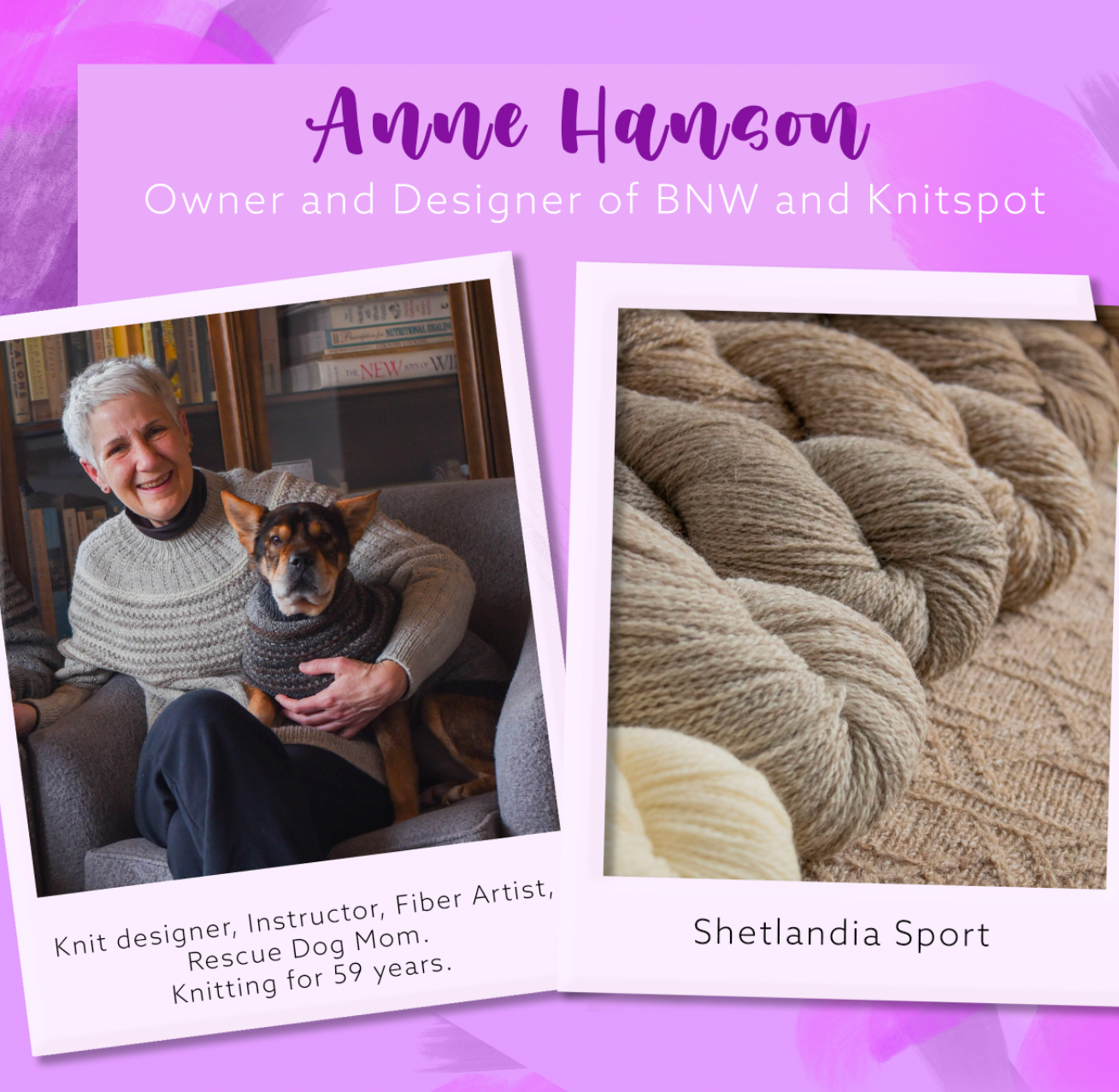
In this Month's Barn Box (March 2023) we’re introducing our latest yarn, a deliciously soft blend of East Friesian sheep wool and Alpaca. And because the Friesian sheep is also known for its milking capabilities, we’re calling it Milkshake! The Alpaca “shakes things up” by adding soft color to this otherwise all-white wool.

If you haven’t heard of East Friesian sheep or wool before, read on—we’re about to make you smarter with this abbreviated wool school lesson.
East Friesian Milk Sheep
The Friesian is a group of several breeds of domesticated marsh sheep that originated in the Friesland region of the Netherlands, where it borders with Germany, Belgium, and parts of Denmark. Friesian breeds include the East Friesian Milk Sheep (from East Friesland, Germany, and the Netherlands), the Dutch Friesian Milk Sheep (from West Friesland), and the Zeeland Milk Sheep (from the Zeeland island to the south). The German East Friesian Milk Sheep (or Ostfriesisches Milchschaf) is the best known and most important of the Friesian breeds.

Characteristics of Friesian Sheep
East Friesians are medium-sized, multipurpose sheep, most well known for heavy milk production, but are also kept for meat and wool. They are usually white in color, but there is also a dark variation. East Friesians are considered to be the world’s highest producing dairy sheep, averaging 300 to 600 liters of rich milk per lactation period. They are not a hardy breed and thrive in specialized conditions, adapting well to intensive milk parlor systems. They have wonderful, pet-like personalities and are prolific breeders, making them an excellent sheep for a small, family milk flock.
The various Friesian breeds are similar in appearance—East Friesians have pink noses and their heads are open (clear of wool locks) and naturally polled (hornless); their legs are also short-haired with pale hooves. Their most distinctive physical feature is a "rat-tail"—thin and free of wool, it often extends to the ankles.
East Friesians produce abundant, medium-length fine white wool that is soft, warm, dense, and well-crimped with a texture and fineness acceptable for use in clothing and household goods. The fiber is 35 to 37 microns, with a staple length of 4.5 to 6.5 inches (120 to 160 mm) and fleeces range from 8.8 to 11.0 lbs (4 to 5 kg) in weight, with a clean yield of about 65 percent. An East Friesian in full fleece has the adorable, comical look of a big ball of wool with skinny, toothpick legs.

Breed History and Migration
In paintings from the 15th to the 17th centuries, flocks of milk sheep (or Melkshaap in Dutch) often dot the landscape, confirming their common presence on farms during the Flemish period. Prints from the early 19th Century depict a "short-tailed" Friesian sheep, suggesting a link with northern European short tail breeds, such as Finnish Landrace and Romanov, which would be consistent with the Friesian’s highly prolific reputation.

In the 1990s, the East Friesian was introduced to the United States through Canada as purebreds and caught on in local dairy operations. While the breed does not thrive in large flocks or challenging weather and range conditions, the ewes are ideal for cross breeding with sheep already well adapted to local conditions. East Friesian and Friesian crosses have rapidly become first choice for commercial sheep milk producers in the United States, New Zealand, and throughout the Middle East.
Milkshake is not our first rodeo with East Friesian wool; we offered it as a selection in a past club and members just LOVED it—extras were snatched up in just a few days, leaving many disappointed. But knitter-quality Friesian fiber is not easy to find, so making another batch with it has been a three-year journey for us.
While not the finest of the wools—in fact, its appearance was a bit more coarse than I expected when I first saw it—Friesian is silky and bright, surprisingly bouncy, and soft against the skin. It has a lovely hand and is a pleasure to knit. On its own, the bounce and crimp, coupled with the coarser diameter, can make for a yarn that is hard to tame in stitches.

A small percentage of fine wool or another soft fiber can counteract this tendency and offers the opportunity to add some color. We chose alpaca for this blend because we felt the warm tan shades available in that fiber would be wonderful for early spring knitting. Its smooth, 3-ply construction offers great stitch definition and creates a fabric with a lovely hand for sweaters, blankets, and soft spring accessories.

Check out our Milkshake yarn in the Peanut Butter Shake color today!



